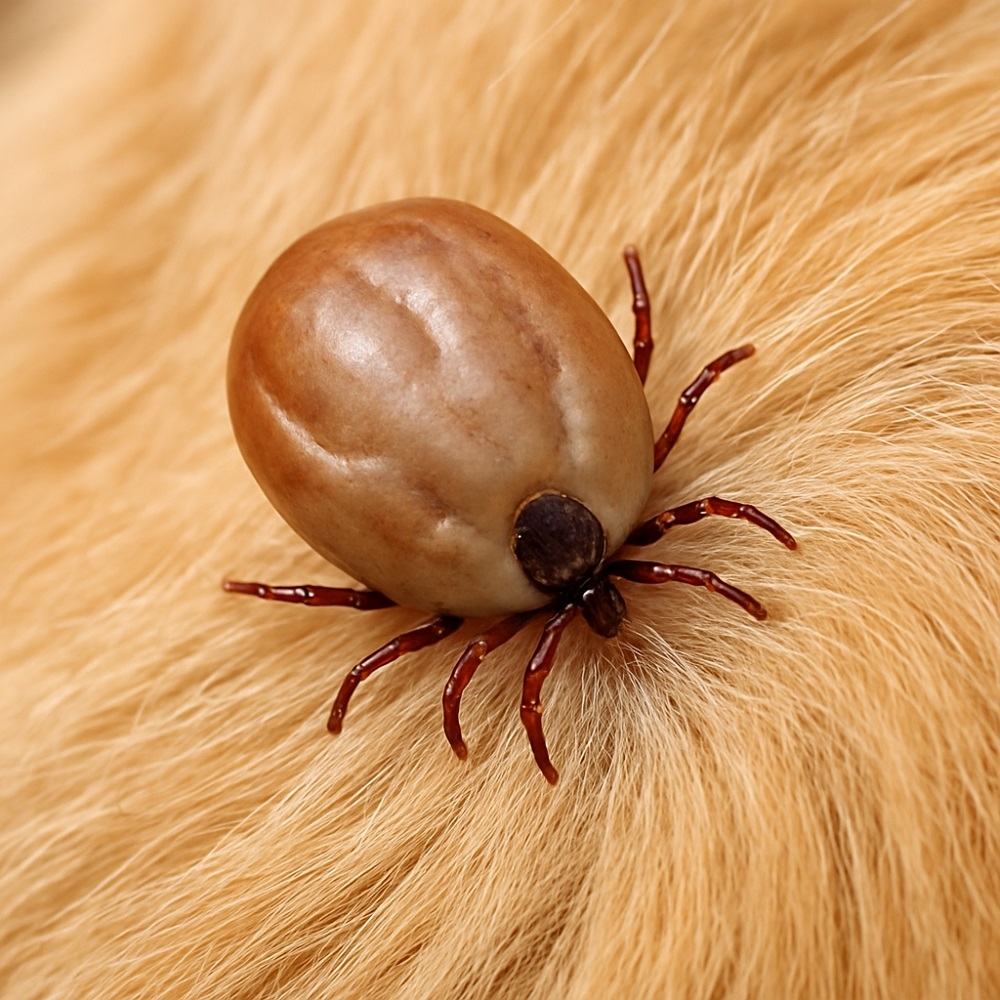Ticks - Protecting Your Gundog During Peak Season
As gundog owners, we love seeing our dogs work and explore the great outdoors. Whether training in woodland, navigating heathland, or flushing game from thick cover, their enthusiasm is infectious. However, these environments, especially as we head into the warmer months (like now, at the beginning of May!), are prime habitats for a tiny parasite that can pose a significant health risk: the tick.

Understanding ticks and how to manage them is crucial for keeping our hardworking canine companions safe and healthy.
What Exactly Are Ticks?
Ticks aren't insects; they're arachnids, related to spiders and mites. These small, blood-sucking parasites vary in size, from a pinhead to a small pea (especially after feeding). In the UK, several species exist, often found lurking in long grass, scrub, woodland edges, and heathland – precisely the places our gundogs frequently venture.
They don't jump or fly. Instead, they practice "questing," climbing onto vegetation and waiting with outstretched legs to latch onto a passing host – be it wildlife, livestock, humans, or our dogs. Once attached, they embed their mouthparts into the skin and begin to feed on blood, swelling significantly as they do.
Why Worry About Ticks?
The Health RisksWhile a tick bite itself can cause localised irritation, the primary concern is their potential to transmit diseases. Ticks can carry various bacteria, viruses, and protozoa. In the UK, the most well-known tick-borne illness affecting dogs (and humans) is Lyme disease (Borreliosis).
Lyme disease can be difficult to diagnose and can cause a range of symptoms in dogs, including:
- Fever
- Lethargy and depression
- Lameness (often shifting between legs)
- Swollen joints
- Loss of appetite
- Swollen lymph nodes
- What to Look For: Before feeding, ticks are small, oval, and greyish-brown. After feeding, they become much larger, rounder, and darker (often grey or bluish-black), resembling a small bean or coffee bean attached to the skin. You might initially mistake one for a small skin lump or wart.
- Where to Look: Ticks prefer warm, sheltered areas. Check your dog thoroughly after every outing, paying close attention to:
- Ears (inside and out)
- Head, neck, and collar area
- Armpits and groin
- Between the toes and paw pads
- Tail base
- Eyelids
- How to Check: Run your hands slowly over your dog's entire body, feeling for small bumps or irregularities on the skin surface. Part the fur in dense areas to check the skin directly.
Preventing ticks from biting in the first place is the best strategy.
- Veterinary Preventatives: This is the most effective approach. Consult your vet about the best tick prevention product for your gundog. Options include:
- Spot-on treatments: Applied to the skin, usually monthly.
- Oral tablets/chews: Given monthly or quarterly, killing ticks after they bite.
- Tick collars: Release repellent or insecticide over several months. Your vet will recommend the most suitable option based on your dog's breed, health, lifestyle, and the local tick risk. Always use products licensed for dogs – never use cat products on dogs or vice-versa.
- Regular Checks: Even with preventative treatments, always check your dog thoroughly after walks, especially through tick habitats. No preventative is 100% foolproof, and removing ticks quickly reduces disease transmission risk.
- Grooming: Regular grooming helps you familiarise yourself with your dog's skin and makes spotting ticks easier.
If you find a tick, removing it promptly and correctly is vital. Incorrect removal can cause the tick's mouthparts to break off in the skin or stress the tick, causing it to regurgitate saliva (potentially containing pathogens) into the bite wound.
How to Remove a Tick Safely:
- Use the Right Tool: Invest in a tick removal tool (like a tick hook or specialized tweezers). Avoid using standard household tweezers if possible, as they are more likely to squeeze the tick's body.
- Get Close: Part the dog's fur so you can see the tick and the skin clearly.
- Engage the Tick: Slide the hook of the tool under the tick, as close to the dog's skin as possible.
- Twist and Pull: Gently twist the tool (either direction works) while pulling steadily upwards, perpendicular to the skin. The twisting action helps disengage the tick's barbed mouthparts. Do not jerk or yank. The tick should come away whole.
- Clean Up: Dispose of the tick safely (e.g., flush it down the toilet, place it in a sealed bag in the bin, or submerge it in alcohol). Clean the bite site on your dog with pet-safe antiseptic. Wash your hands thoroughly.
- Don't squeeze the tick's body: This increases the risk of injecting pathogens.
- Don't apply petroleum jelly, alcohol, or nail polish: These methods don't work effectively and can stress the tick.
- Don't try to burn the tick off: This is dangerous for both you and your dog and can also cause the tick to regurgitate.
- Monitor the Bite Site: Keep an eye on the area where the tick was removed for signs of infection (excessive redness, swelling, pus) or a rash (though the 'bullseye' rash common in humans with Lyme disease is rare in dogs).
- Monitor Your Dog: Watch your dog for any signs of illness in the days and weeks following a tick bite (lethargy, fever, lameness, loss of appetite).
- Consult Your Vet If:
- You suspect the tick's head/mouthparts were left behind.
- The bite site looks infected.
- Your dog shows any symptoms of being unwell after a known or suspected tick bite.
- You live in or travel to a high-risk tick area and want to discuss the best prevention strategy.
